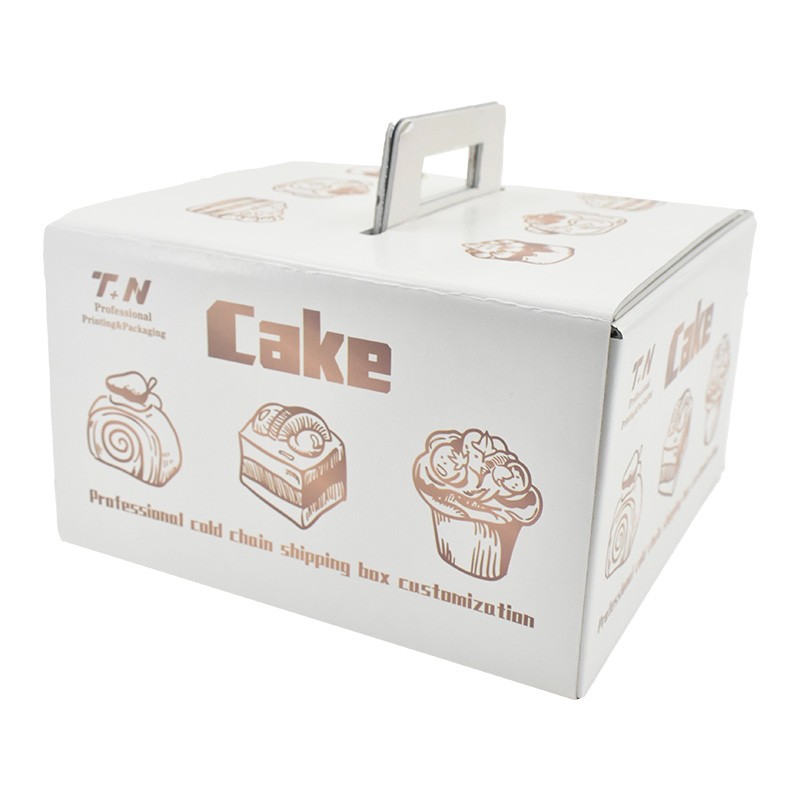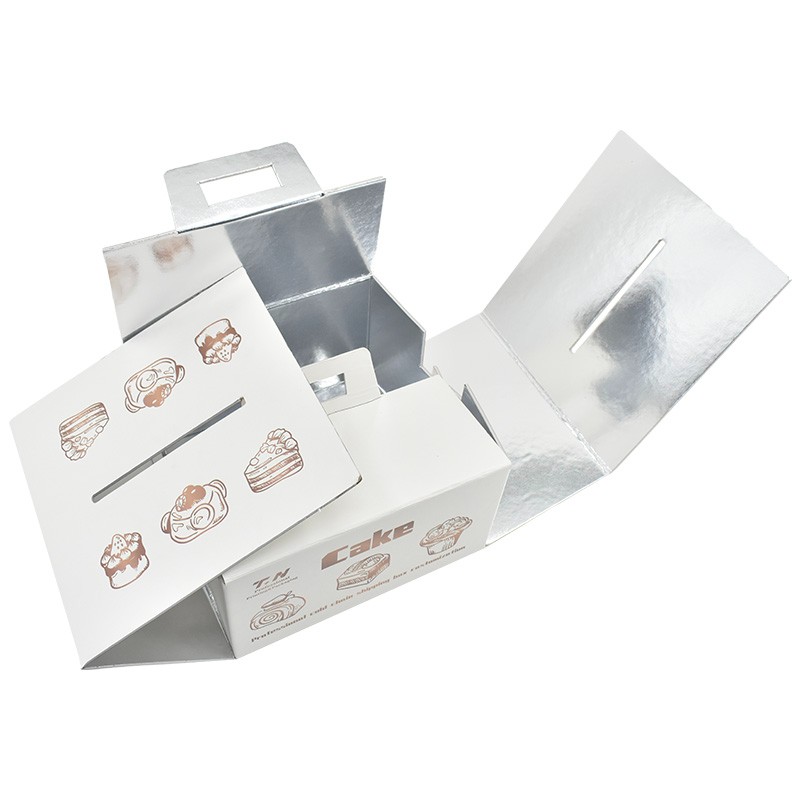Advancements in Frozen Food Packaging for Preservation

Frozen food packaging has come a long way from its humble beginnings. Consumers now have access to a wider array of frozen foods, thanks to cutting-edge developments in packaging technology. These innovations play a vital role the ability to maintain the freshness of food for extended periods.

One notable advancement is the use of advanced materials. These materials are designed to prevent passage of oxygen, moisture, and other external factors that can lead to degradation. Moreover, some packaging incorporates intelligent systems that absorb off-flavors and odors, ensuring the sensory experience of frozen foods remains consistent upon thawing.
The evolution of frozen food packaging continues to shape the industry, offering food manufacturers a range of value-added features. As research and development progresses, we can expect even more sophisticated solutions that will further enhance the preservation of frozen foods, providing consumers with healthy options for years to come.
Eco-conscious Solutions for Frozen Food Containers

As people become increasingly mindful of their environmental impact, the requirement for sustainable alternatives in various aspects of life is growing. The frozen food industry, known for its convenience, faces a particular difficulty in finding sustainable packaging methods. Traditional frozen food containers often involve non-biodegradable materials like plastic, which contribute to landfill accumulation and pollution. To resolve this concern, there is a growing emphasis on novel sustainable solutions for frozen food.
- Renewable Materials: Transitioning to natural materials derived from renewable resources offers a promising avenue for lowering the environmental burden of frozen food containers. These materials can disintegrate naturally, minimizing landfill waste and promoting a circular economy.
- Durable Containers: Promoting the use of durable containers can greatly diminish the need for single-use packaging. Consumers can invest high-quality, safe containers that are designed to withstand freezing temperatures and multiple use.
- {Edible|Biofilm| dissolvable|Containers: Research into edible films made from starches is moving forward. These innovative containers could potentially remove the need for any packaging at all, as they would simply be consumed along with the food.
Furthermore, implementing optimized production processes and reducing food waste can contribute to a more sustainable frozen food industry. Finally, by embracing these sustainable solutions, we can develop a more sustainable future for frozen food containers.

Optimizing Material Choice for Frozen Food Packaging
Frozen food packaging demands materials that can withstand the rigors of freezing temperatures and maintain product quality. Suitable material selection is crucial for ensuring shelf durability and preventing freezer burn, thus preserving taste and food value.
Considerations like barrier properties against moisture and oxygen, heat resistance, and environmental impact play a significant role in determining the ideal material for a given frozen food product.
Commonly used materials include polypropylene (PP), corrugated board, and laminated foils. Understanding the unique properties of each material is essential for making informed decisions that enhance both product protection and purchaser appeal.
Consumer Perceptions of Frozen Food Packaging Design
The success of a frozen food product hinges on many factors, but the design for its packaging plays a significant role in capturing consumer interest. A well-designed package can entice shoppers, communicate food item qualities, and ultimately influence purchasing preferences. Understanding consumer opinions on frozen food packaging design is essential for manufacturers to produce attractive packages that resonate with their target market.
Consumers are increasingly mindful of packaging environmental impact, and they often choose brands committed to minimizing their environmental footprint. Additionally, consumers expect clear and comprehensible labeling that showcase product composition and nutritional value.
Enhanced Shelf Life through Barrier Properties in Frozen Foods
Maintaining the integrity of frozen foods during storage is paramount to ensure consumer satisfaction. This necessitates the implementation of effective preservation frozen food packaging solutions that effectively mitigate factors contributing to spoilage. Protective qualities play a pivotal role in achieving this goal by reducing the permeation of oxygen, moisture, and other potentially harmful substances into the frozen food.
- Innovative packaging materials often incorporate engineered structures designed to create a robust barrier against these environmental factors.
- By reducing exposure to oxygen, rancidity can be effectively prevented, thus preserving the taste and nutritional value of frozen foods.
- Waterproofing are equally crucial in preventing dessication, which can lead to textural changes and negative impacts on the overall quality.
Therefore, the incorporation of effective barrier properties into frozen food packaging can significantly extend shelf life, reduce food waste, and enhance the reliability of the frozen food supply chain.
The Impact of Packaging on Frozen Food Quality
Preserving the quality of frozen food hinges on the effectiveness of its packaging. Substandard packaging can lead to freezer burn, compositional degradation, and an overall decline in the enjoyment of the product. Conversely, innovative materials that are barrier-based effectively protect the integrity of frozen food, ensuring a delicious eating experience when thawed.
Emerging Trends in Frozen Food Packaging Technology
The frozen food industry is continually transforming to meet consumer demands for convenience. As a result, packaging technology is playing an increasingly important role in ensuring the quality and shelf life of frozen products. Emerging trends are influencing this evolution, with a focus on sustainability, effectiveness, and consumer experience.
One key trend is the use of innovative materials.
Producers are researching alternatives to traditional plastics, such as plant-based materials. These sustainable options help to reduce the environmental impact of frozen food packaging.
Another trend is the implementation of active and intelligent packaging technologies. Active packaging utilizes ingredients that absorb unwanted gases or vapor inside the package, extending shelf life and preserving product quality. Intelligent packaging incorporates sensors or indicators that can track the condition of the food and signal consumers when it is no longer fresh.
These advancements are not only positive for the environment but also enhance the consumer experience. Wrappers that are more functional and visually pleasing can increase sales and customer satisfaction.
As technology continues to evolve, we can expect to see even more groundbreaking trends in frozen food packaging.
Reducing the Environmental Impact of Frozen Food Packaging
The frozen food industry poses a unique challenge when it comes to environmental sustainability. Traditional packaging materials for frozen goods, such as films, often contribute to landfill waste and damage ecosystems. To mitigate this impact, innovative solutions are gaining traction. Reusable packaging options, along with efficient production processes, are essential to creating a more sustainable future for frozen food.
New Designs for Convenient Frozen Food Consumption
Frozen food has evolved significantly past, offering a convenient and tasty solution for busy individuals. Still the traditional method of reheating frozen meals can be arduous. To address this challenge, innovative designers are crafting unique solutions to make consuming frozen food more convenient.
These advancements encompass a wide variety of concepts. Some designs emphasize on streamlining the reheating process, while others emphasize single-serving sizes. Moreover, there's a growing trend toward environmentally conscious packaging and heating methods.
One potential example is the development of smart containers that can precisely heat frozen food to the perfect temperature. These containers harness advanced technology to track the heating process, ensuring a appealing meal every time.
Another groundbreaking approach is the use of recyclable pouches that can be prepared directly in the microwave. This eliminates the need for extra cookware, making cleanup simpler.
These are just a few examples of the exciting designs emerging in the frozen food industry. As technology advances and consumer demand for convenience grows, we can look forward to even further impressive solutions that will revolutionize the way we enjoy frozen food.
Regulations and Rules for Frozen Food Packaging Safety
Ensuring the safety of frozen food is paramount, and packaging plays a crucial role in preserving quality and preventing contamination. To achieve this, regulatory bodies worldwide have established stringent regulations governing the materials used, design, and labeling of frozen food packaging. These rules aim to minimize the risk of microbial growth, chemical leaching, and physical damage during storage and transportation. Packaging materials must be non-toxic, impermeable to moisture and gases, and capable of withstanding freezing temperatures. Moreover, clear details on the package is essential to inform consumers about proper handling, storage conditions, and potential allergens.
- Critical aspects of frozen food packaging safety include:
- Substance selection
- Configuration
- Marking
- Testing
Compliance with these guidelines is vital for protecting public health and maintaining consumer confidence in the safety of frozen food products.
Exploring the future of Frozen Food Packaging Solutions
As consumer demand for convenient and sustainable food options continuously rises, the frozen food industry is transforming significantly. This evolution extends particularly to packaging solutions, with a strong focus on maintaining nutritional value while minimizing environmental impact. The future of frozen food packaging promises exciting innovations, driven by cutting-edge technologies and a shared responsibility to create eco-friendly packaging solutions.
- One promising trend is the increasing use of renewable materials, derived from organic matter, which decompose readily leaving no trace.
- Moreover, smart packaging technologies are becoming increasingly popular, incorporating sensors to ensure quality control throughout the supply chain.
- In conclusion, the future of frozen food packaging is bright, with a commitment to innovation.